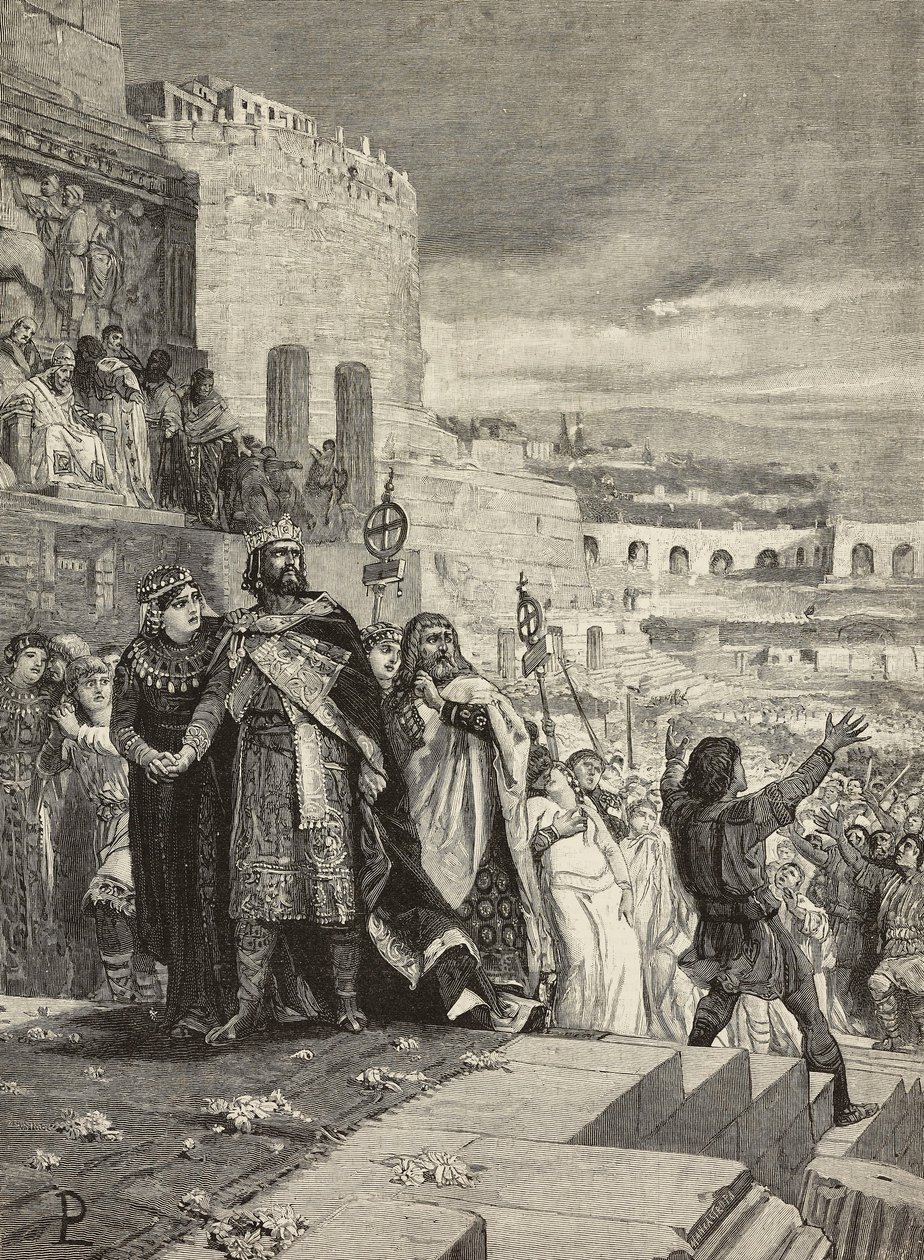Marozia
Marozia (* 892 – † 955), a Roman noblewoman also known as Mariozza, was the daughter of Theodora (sister of Adalbert of Tuscany) and the Roman senator Theophylact I Although other sources claim that his real father was Pope John X.
She was one of the most influential women of her time since, in 907, at the age of 15, she became the mistress of Pope Sergius III and went on to dominate papal politics for a period of about twenty-five years that has passed into the history with the name of pornocracy. In that period she influenced the election of up to six popes and ordered the death of some of them.
Pornocracy
Marozia married three times with high-ranking figures of the nobility. Her first husband, Alberico I the Greater, Marquis of Camerino and Duke of Spoleto, who was 22 years older than her, married her in the year 909 when she was pregnant from the relationship she had with Pope Sergio III. The son who would be born in 910 was legitimized by Alberico and would become the future Pope John XI. After the death of Sergio III in 911, from this first marriage, around 912, Alberico II would be born, who will play a leading role in the future fall of his mother and, later, at least 3 more children.
In 914 his mother Theodora the Elder made John X, an old lover, pope, after which he died in 916. Although in 915, John X and Alberico I fought together in a Christian League to expel the Saracens of Italy in the Battle of Garigliano, he rejected the intrusions of Marozia and Alberico I, who in 924, when trying to gain absolute power from Rome, confronted the pope; but when he failed, Alberico was expelled to his domain in Orte from where he asked the Hungarian mercenaries for help, but they switched to the side of Juan X and assassinated him.
Marozia then found herself in a situation of weakness that she resolved by marrying the Marquis Guido de Toscana, from whose union Berta de Lucca would be born.
In that same year, the throne of Italy became vacant when Berengar I died. The choice of his successor caused a new confrontation between Marozia and Pope John X, since while the pope supported Hugh of Burgundy as a candidate for the throne, Marozia lent her support to Hugo de Arles, stepbrother of her second husband.
After the death of Theophylact I in 925, in 926 with the enthronement of Hugo de Arles the confrontation was resolved this time in favor of Marozia and her husband Guido, who headed to Rome at the head of an army and After deposing the pope, he imprisoned him until his death in 928.
Fall
In 929 Guido of Tuscany died and Marozia decided to marry her brother-in-law, the stepbrother of her late husband and King of Italy, Hugo of Arles, for which they had to annul Hugo's marriage since he was married. The marriage annulment was easily achieved since the pope who then governed the Church was John XI, Marozia's own son whom she had elected in 931.
The new marriage took place in 932 and provoked the rebellion of Marozia's other son, Alberico II the Younger, who expelled his new stepfather from Rome, seized power and had him imprisoned in the castle of Sant' Angelo, his mother and his half-brother Pope John XI who died in 935.
She will remain in said prison until the death, in 954, of Alberico II, from where she was transferred to a convent where she died in 955 and was buried in the monastery of Santos Ciriaco and Nicola on Via Latina.
Marozia in popular culture
- The historical novels "The Gospel of Venus" by Alfonso S. Palomares and "A woman like so many: Marozia emperatriz" by Alejandro Volnié are dedicated to this character.
- There is a 17-minute Italian mini-documentary entitled "Marozia, l’amante dei Daddy" that dramatizes his life.

